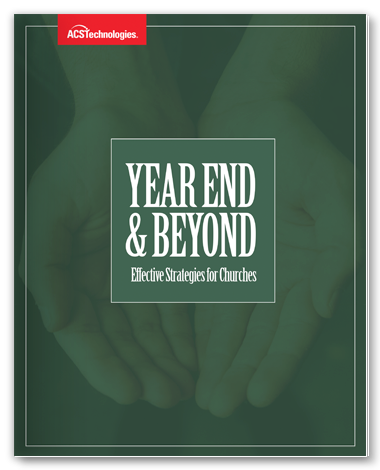Year-End and Beyond Series 1
For many nonprofits, ministries and churches, more than half of their annual contribution revenue comes during the last quarter of the year. While this isn’t true for all, this is a season many donors consider making significant contributions. And these can be driven by both their passions and the realities of tax benefits.
These weeks at year-end can become hectic fast, especially for churches. If you don’t go into it with a plan, you’ll find yourself looking back in the spring with regret because you missed some opportunities to invite your members to deepen their commitment.
In this blog series, we’ll look at four concrete steps to help you make the most of both year-end giving and beyond.
Step one is reviewing your goals and setting an action plan with effective strategies for your church.
Take a close look at your annual contribution goals and if you are on pace to meet or exceed those. If you don’t have any annual goal for fundraising income, you can look at past revenue numbers. Based on your typical growth percentage, estimate your goal for this quarter.
In addition to financial goals, it’s important to review your goals for acquiring new donors, increasing monthly/recurring giving among your donors, or any other donor or member retention goals you set. If you haven’t set those at the beginning of your year, consider what those might be based on your member and donor data and commit to setting those goals in the new year.
Develop a plan that fits your goals. If your review shows you are a specific dollar amount short of where you should be – or where your pledges indicated you would be – strategize a campaign to motivate your members. You might consider a specific campaign or year-end push to close the budget gap or meet a specific need.
As an example, perhaps your pledges are behind, and you’re projecting a shortfall of $125,000 if nothing changes with the pace of your giving. Planning a “12 days of giving” campaign could help educate and motivate your members. Think creatively about how you could structure that campaign. Is there a donor who would be willing to help with a matching gift? Could you break the goal down into manageable chunks? Is there a specific message to people behind on their pledge commitments versus a communication to new or prospective donors? Develop the strategies and actions for the campaign push.
Conclusion
In the following blogs, we’ll unpack the other three steps in year-end planning. They are calendaring; gathering your stories for appeals; and thank yous.
Documenting your end-of-the-year strategies and their outcomes. This will help you evaluate how you did, so you’ll have a plan to review when it comes time to build next year’s end-of-the-year fundraising.
If you feel behind this year, don’t despair! These steps are not just fundamental for year-end, but they’re tools you can use to build effective development strategies year-round.
Four Steps to an Effective Year-End
Most ministry organizations see a big upswing in donations in the last quarter of the year. Many donors consider making significant contributions in the last weeks of the calendar year. These decisions can be driven by their passions and interests and the realities of tax benefits.
In this article, you’ll learn four steps to help your church make the most of year-end giving – and beyond.
Tim has over 30 years of experience in Church, Non-Profit Administration, Management, and Fund Development. Serving as an Executive Pastor and Chief Development Officer in growing Churches and Non-Profit Organizations. He has provided a wide range of expertise and resources. Tim serves as the Founder and CEO of Non-Profit DNA. A boutique firm committed to helping nonprofits and churches. By building their capacity through fundraising, leadership, team building, staff recruiting, and coaching.





